Poplars and willows: Hill country heroes
Kate Taylor, New Zealand Tree Grower May 2021.
Farm foresters know all about planting the right tree in the right place at the right time. The New Zealand Poplar and Willow Research Trust has a plan to spread the message further about the specific benefits of poplars and willows. A group of farmer ambassadors has been appointed around the country to promote the use of poplars and willows on farms.
The farmer ambassadors are volunteers willing to share their practical knowledge on planting, placing, managing and using poplars and willows, and on the benefits the trees have provided in their own farming operations. A number of them are keen farm foresters.
They are available to speak at field days or other rural events or talk one-on-one with farmers about poplars and willows. They are kept up to date with new research and extension developments, so are also a useful contact for regional council land managers or other rural professionals offering extension services to farmers.
The Poplar and Willow Research Trust are trying to get at least one ambassador in each region to give land owners a local contact. They are Bruce Lupton from Northland; Tom Mandeno, Bill Garland and Ken Haywood from Waikato; Brent Mountfort from Bay of Plenty; Rob Faulkner and Bill Busby from Gisborne; Dave Read, Philip Holt and James Hunter from Hawke’s Bay; Mark Shaw and Roger Pearce from Taranaki; Shane Carroll and Ash Rodie from Horizons; Robert Alloway, Hamish Sims, Guy Williams and Andy Renton from Greater Wellington and Hunter Harrison from Tasman. Otago’s Neil Cullen is the most recent ambassador.
Research
The Poplar and Willow Research Trust was formed in 2011 to fund research into poplars and willows, which have an important role in developing greater resilience in farming systems. Plant & Food Research scientists Ian McIvor and Trevor Jones breed poplar and willow cultivars to test in field trials. In the nursery, pest and disease resistance, branch angle, stem form, brittleness and plant vigour are evaluated.
The best seedlings are selected for field trials and monitored for up to 15 years to determine survival, growth and compatibility with grazing stock and pests. Water use efficiency, rooting capability, ease of propagation, wood properties and tolerance to wind and drought are also examined. Current research is investigating how tree root development on slopes varies with age, soil type and pollarding management.
Erosion control
New Zealand has about half a million hectares of pastoral hill country needing trees such as willows or poplars for erosion control. The deep and extensive root systems provide the best means of minimising soil erosion and also help to keep rivers healthy.
Willows are planted on small, steep-gradient water courses on hill slopes where there is risk of gullying by storm run-of. On easier slopes or valuable grazing country, poplars or willows can be space-planted in pasture at risk from soil slips, earthlows and slumps.
Research has shown well-spaced planted poplars and willows on hill country can reduce soil loss by as much as 90 per cent compared with unprotected land. Where erosion does take place, other research has shown that recovery of pasture production is a very slow process. It takes over 30 years for eroded hills to recover 70 per cent of original production, with slow gains to 80 per cent after 60 years. That is at least two generations of farmers.
Soil is much too valuable for food production to allow such losses. Much erodible hill country can be stabilised and sustained as farmland by planting poplar and willow poles into vulnerable pastoral areas. As well as minimising erosion, they allow for good pasture growth below the trees, which enhances stock carrying capacity. Annual pasture production per hectare in areas with wide-spaced unmanaged trees is reduced by between eight and 13 per cent compared to areas with open pasture.
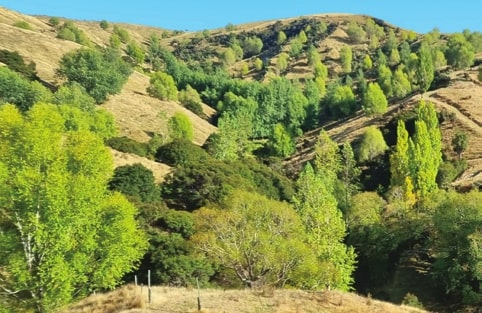
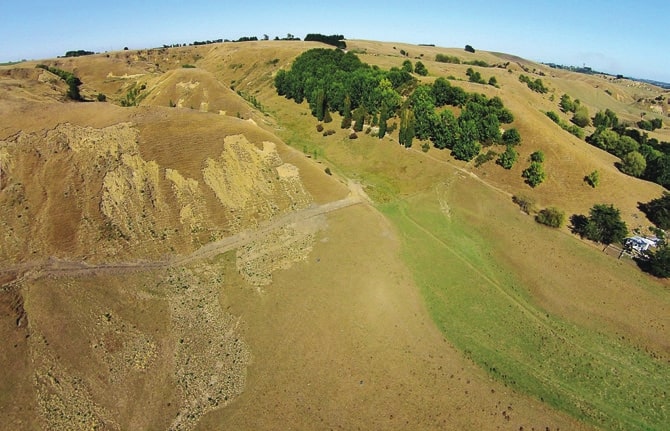
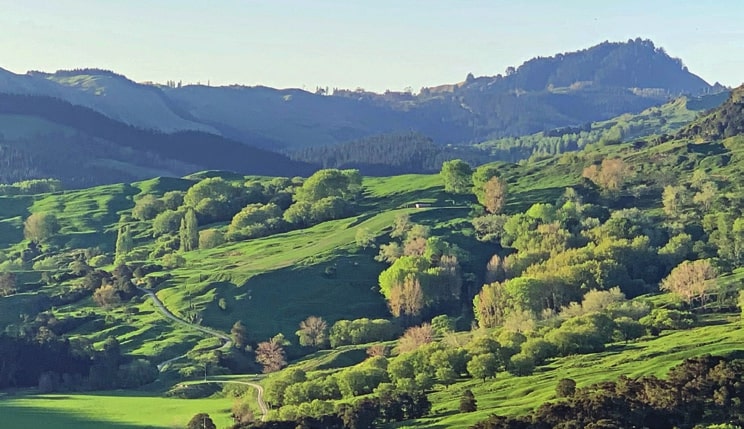
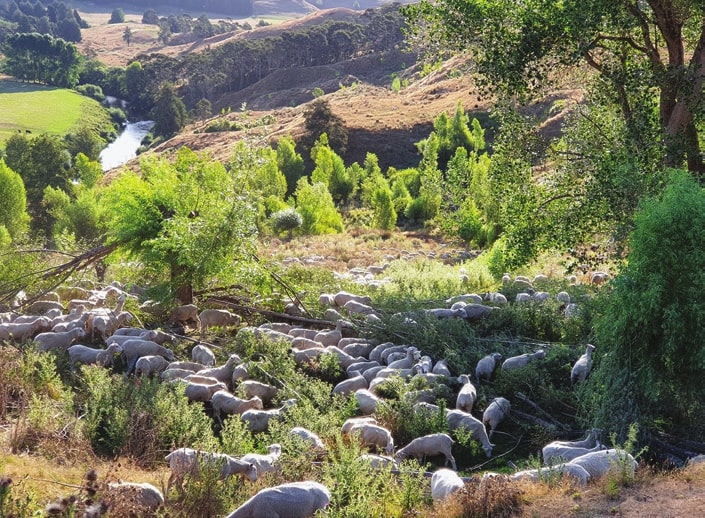
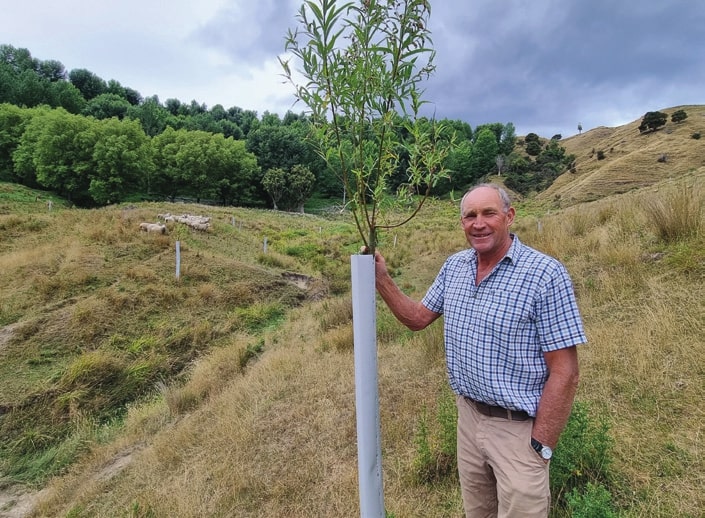
Wide ranging benefits
Known for their erosion control, and shade and shelter qualities, palatable poplars and willows can form a valuable part of a farm drought resilience plan. Massey University research found that a tree between five and 10 years old can produce up to 22 kilograms of dry matter edible forage, and that poplars and willows were similar in nutritive value to lucerne hay. Mature poplars and willows shed a large quantity of leaves in autumn and early winter. Once trees are about five years of age, leaf fall can provide 60 kilograms or more of dry matter per tree. Willows also provide food for bees in spring.
Poplars and willows can be planted to protect farm assets such as fences which are prone to slip damage, tracks prone to drop-outs, unstable ground around farm buildings or vehicle crossings, culverts, and bridges. The average cost following a big storm on the East Coast in 2011 was $235,000 per farm.
Poplars and willows also provide cover to help with the establishment of native trees in riparian planting. When planted as waterway buffers, they also stabilise the edges, stop sediment and intercept nutrients.
Timber and carbon credits
Tim Forde’s Hawke’s Bay farm generates battens, fence posts, stays, gates and yard rails made of poplar at least 30 years old. Poplar is ideal for truck decking because it does not splinter easily, and being light means it is also good for toys and furniture. It is quick drying with sawn poplar battens drying in half the time taken for pine, down to 20 per cent moisture in three weeks during an average autumn. Poplar is a strong, flexible timber and is a hardwood. After all costs, such as milling, treatments and transport, Tim is getting about $700 to $800 nett for each tree.
Space-planted poplars and willows can be eligible for the Emissions Trading Scheme. Carbon credits can be claimed provided the trees meet the definition of forest land and are planted on land which is designated ‘post-1989 forest’. The forest-land definition requires land coverage to be at least a hectare in size, that it will have tree crown cover of more than 30 per cent and has an average width of at least 30 metres. Forest trees include poplar and willow, but they need to meet the criteria of being able to reaching at least five metres in height where they are growing.
Kate Taylor is an independent writer who has produced the article on behalf of the Poplar and Willow Research Trust. More information is available on www.poplarandwillow.org.nz

 Farm Forestry New Zealand
Farm Forestry New Zealand